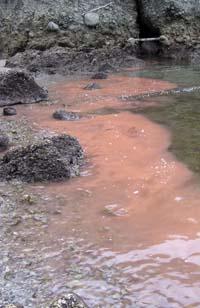Toxins, tool for hunting algae

Some algae produce toxins to paralyze their prey
A group of biophysicists from the University of Minnesota has shown that toxins produced by Carlodinium eficvenum dinoflagellated algae facilitate the capture of prey.
The dinoflagellates of Karlodinium veneficum are typical of red tides. These and other dinoflagellates, by producing toxins, cause great damage to the sudden growth of algae that occur periodically.
However, toxin production requires a lot of energy and scientists wanted to know if that energy investment is used to protect themselves from predators and not to compete with competition. And they suspected that they also used them to prey. In fact, these dinoflagellates can live and grow by only photosynthesis, but by catching and feeding other algae they can double the speed of growth.
The laboratory employed two strains of the aforementioned dinoflagellates, one that produced toxins and one that did not produce. With each of these strains, prey was placed and the behavior of each other was studied. It was observed that the level of activity of the dams decreased to a greater extent by joining the toxic strains: there was a motionless double dam in the waters of the toxic strain. And five hours after the experiment, more than 90% of these dams remained inactive.
Buletina
Bidali zure helbide elektronikoa eta jaso asteroko buletina zure sarrera-ontzian











